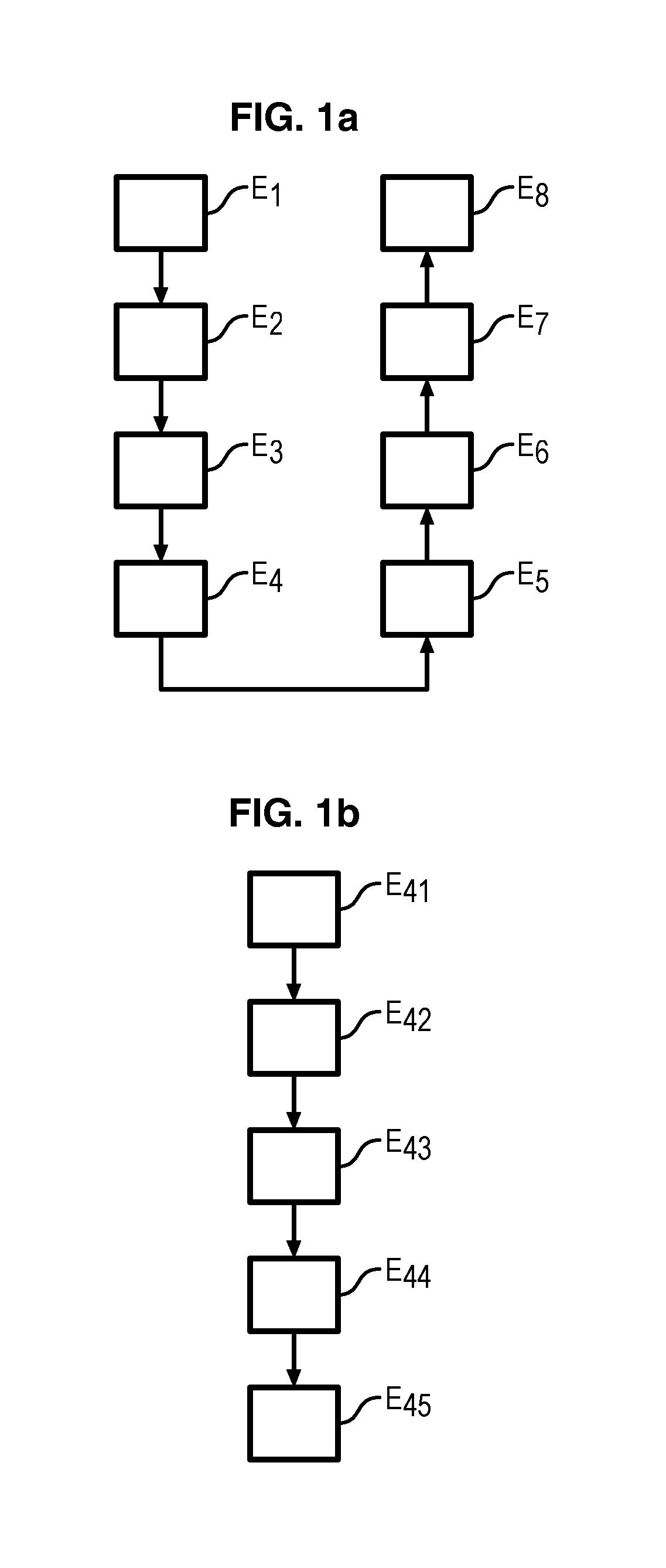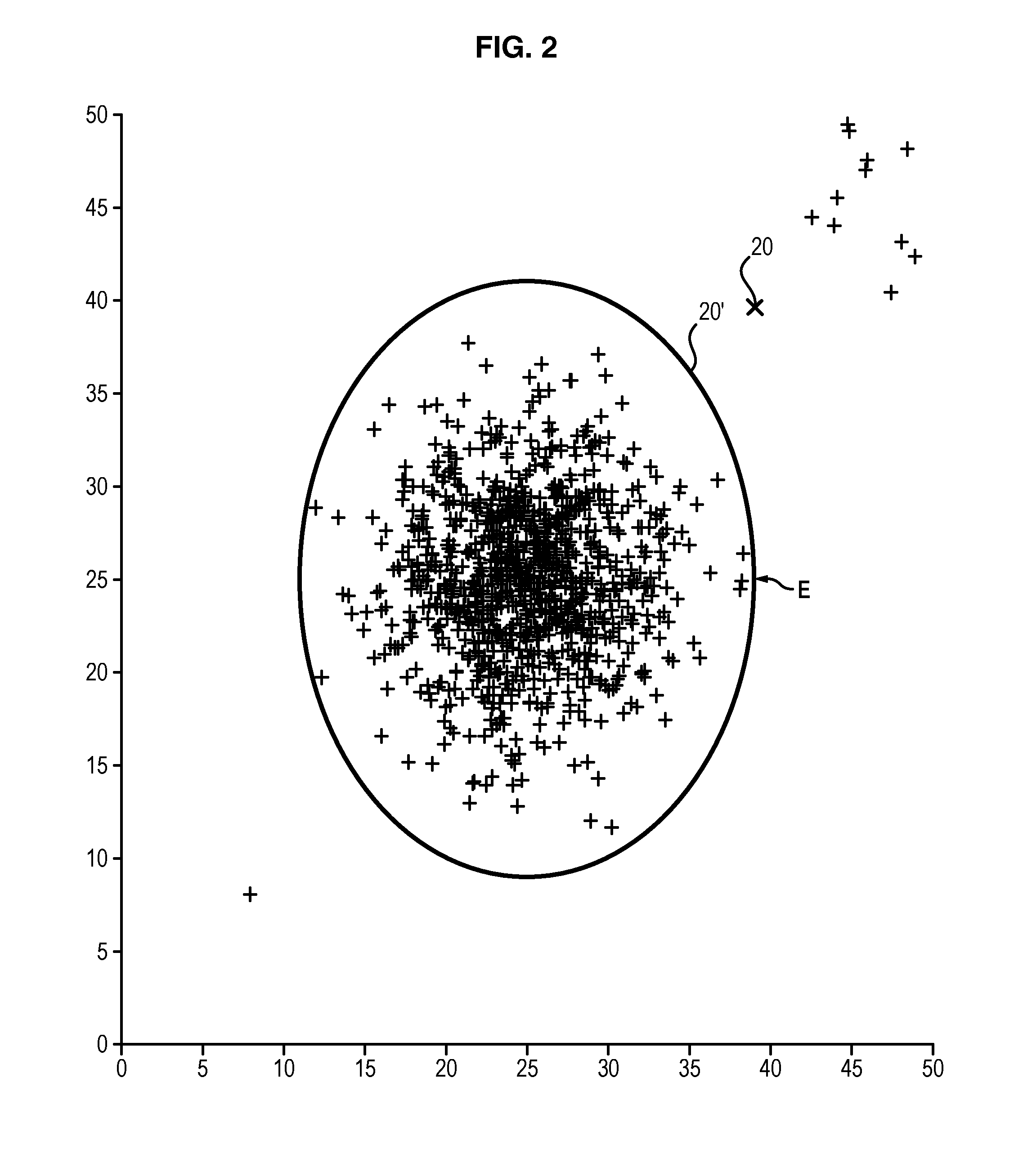Method of analysing flight data
a flight data and flight data technology, applied in the field of flight data analysis, can solve problems such as non-detection of abnormal fligh
- Summary
- Abstract
- Description
- Claims
- Application Information
AI Technical Summary
Benefits of technology
Problems solved by technology
Method used
Image
Examples
first embodiment
[0057] the grouping together E2 in the vector consists in keeping all of the data. This is then known as an exhaustive approach.
[0058]According to this first embodiment, to obtain a vector Xi it is advisable to take the matrix Fi and to stick columns one to one.
[0059]The vector Xi is then of dimension d=T×P and is defined by:
Xi=[Fi(t=1,p=1), . . . , Fi(t=T,p=1), . . . , Fi(t=1,p=P), . . . , Fi(t=T,p=P).
[0060]For example if T=1000 and P=30 then there is a vector X, of size 30000 (and not a matrix of size 1000×30).
[0061]The grouping together according to this first embodiment is useful when one has little extensive job knowledge, and makes it possible to spot quite easily any flight path deviation.
second embodiment
[0062] the grouping together E2 in the vector Xi consists in focusing on the value of the parameters at precise instants, which are known as snapshots. These precise instants have an operational sense, for example for the landing phase a snapshot may be made every 1000 feet from 10000 feet of altitude, or then snapshots may be made at instants where particular events take place: landing gear down, etc.
[0063]In assuming that n instants of snapshots have been defined then for a flight i the instants of snapshots t1i, . . . , tni are noted. It should be noted these instants do not necessarily take place at the same moment for each flight.
[0064]The vector Xi is then of dimension d=n×P and is defined by
Xi=[Fi(t=t1i,p=1), . . . , Fi(t=tni,p=1), . . . , Fi(t=t1i,p=P), . . . , Fi(t=tni,p=P).
[0065]This second embodiment makes it possible to obtain better results than with the first embodiment. Indeed, in this second embodiment, since T>>n there is much less data to process than in the first ...
third embodiment
[0066] the grouping together E2 in the vector Xi consists in “summarising” each “curve” of each parameter in a small set of k≈5 or 10 values: these k values may for example be the average, the variance, the max. value, the min. value of each parameter recorded.
[0067]These k values are then combined for all of the parameters to obtain the signature vector Xi of dimension d=k×P for k≈4 is defined by
Xi=[mean(Fi(p=1)),var(Fi(p=1)),max(Fi(p=1)),max(Fi(p=1)),⋮mean(Fi(p=P)),var(Fi(p=P)),max(Fi(p=P)),max(Fi(p=P))].
[0068]If for example there are P=30 parameters, one then has a signature vector Xi of size d=120.
[0069]At the end of the grouping together step E2, there are available N≧1 signature vectors Xi of size d, the components of which correspond to pertinent data recorded during said flight i of the aircraft.
[0070]In a complementary manner, each of the components of each signature vector Xi may be normalised E3.
[0071]Such a normalisation proves useful when the components of each signatur...
PUM
 Login to View More
Login to View More Abstract
Description
Claims
Application Information
 Login to View More
Login to View More - R&D
- Intellectual Property
- Life Sciences
- Materials
- Tech Scout
- Unparalleled Data Quality
- Higher Quality Content
- 60% Fewer Hallucinations
Browse by: Latest US Patents, China's latest patents, Technical Efficacy Thesaurus, Application Domain, Technology Topic, Popular Technical Reports.
© 2025 PatSnap. All rights reserved.Legal|Privacy policy|Modern Slavery Act Transparency Statement|Sitemap|About US| Contact US: help@patsnap.com



